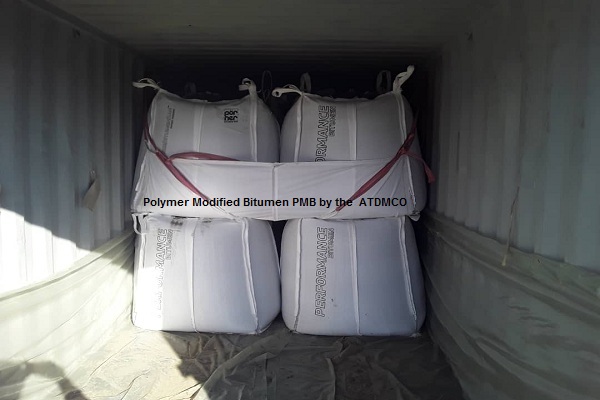
Polymer Modified bitumen or PMB capable of being employed as a binder for poured asphalt compositions, characterized in that it consists of bitumen containing approximately from 3 to 15% by weight of a copolymer of olefin and of unsaturated aliphatic ester and of unsaturated aliphatic acid, and in that it may additionally contain approximately from 3 to 40% by weight of a heavy oil.
Bitumen which is a mixture of substantially different hydrocarbons with varying proportions of paraffinic, naphthenic and aromatic hydrocarbons, is used widely because of its properties, so for the production of road surfaces, as sealing compounds, in building protection as paints or in the form of roofing felt as well as a sealant against groundwater. Due to the specific product characteristics – bitumen generally have no elastic properties – thus brittle coatings produced at low temperatures and soften at higher temperatures.
Table of Contents
ToggleBy addition of various additives, in particular of polymers, it is attempted to achieve a compensation of bitumens, particularly to an improvement of the rheological properties, for example, the asphalt, a bitumen-mineral mixture, especially for road construction, a sufficient stability and flexibility at low temperatures and a should give high fatigue strength at ever-increasing traffic loads. Thus, the polymer additive can increase the so-called plasticity range, the difference between the softening point and breaking point. A lowering of the breaking point (DIN 52 012) and an increase in ductility (DIN 52 013) by polymer additive show better cold flexibility and called polymer modified bitumen. The purpose of the polymers as additives bitumen is the change of the elastoviscous behavior of bitumen, that is the extension of its plasticity range and improvement of elastic recovery.
No. | Designation | Grades & Requirements | Test Method | ||||||
PMB 120 | PMB 70 | PMB 40 | |||||||
1 | Penetration at 25 °C | 90-150 | 50-90 | 30-50 | IS 1203-1978 | ||||
2 | Softening point, ( R & B ), C Min. | 50 | 55 | 60 | IS 1205-1978 | ||||
3 | Elastic recovery of half thread in Ductilometer at 15 °C, % Min. | 70 | 70 | 70 | IS 15462-2004 | ||||
4 | Flash point °C Min. | 220 | 220 | 220 | IS 1209-1978 | ||||
5 | Separation difference in softening | 3 | 3 | 3 | IS 15462-2004 | ||||
6 | Thin Film Oven Test (TFOT) on residue | ||||||||
a). Reduction in Penetration of residue at 25 °C, Min. % of original | 35 | 35 | 35 | IS 1203 – 1978 | |||||
b). Increase in softening point, °C Max. | 7 | 6 | 5 | IS 1205 – 1978 | |||||
c). Elastic recovery of half thread in Ductilometer at 25 °C, % Min. | 50 | 50 | 50 | IS 15462 -2004 | |||||